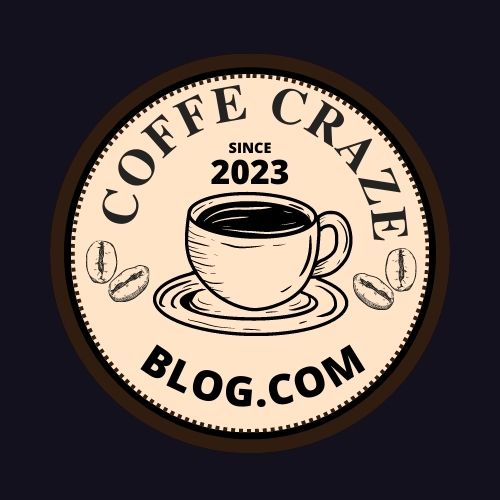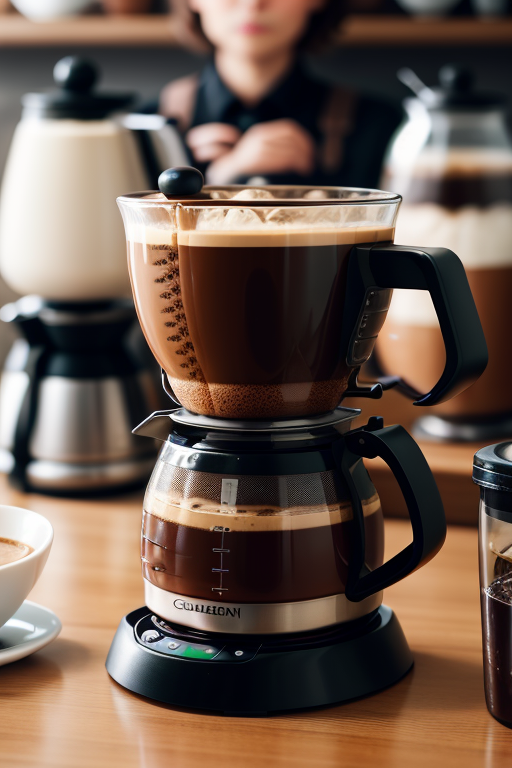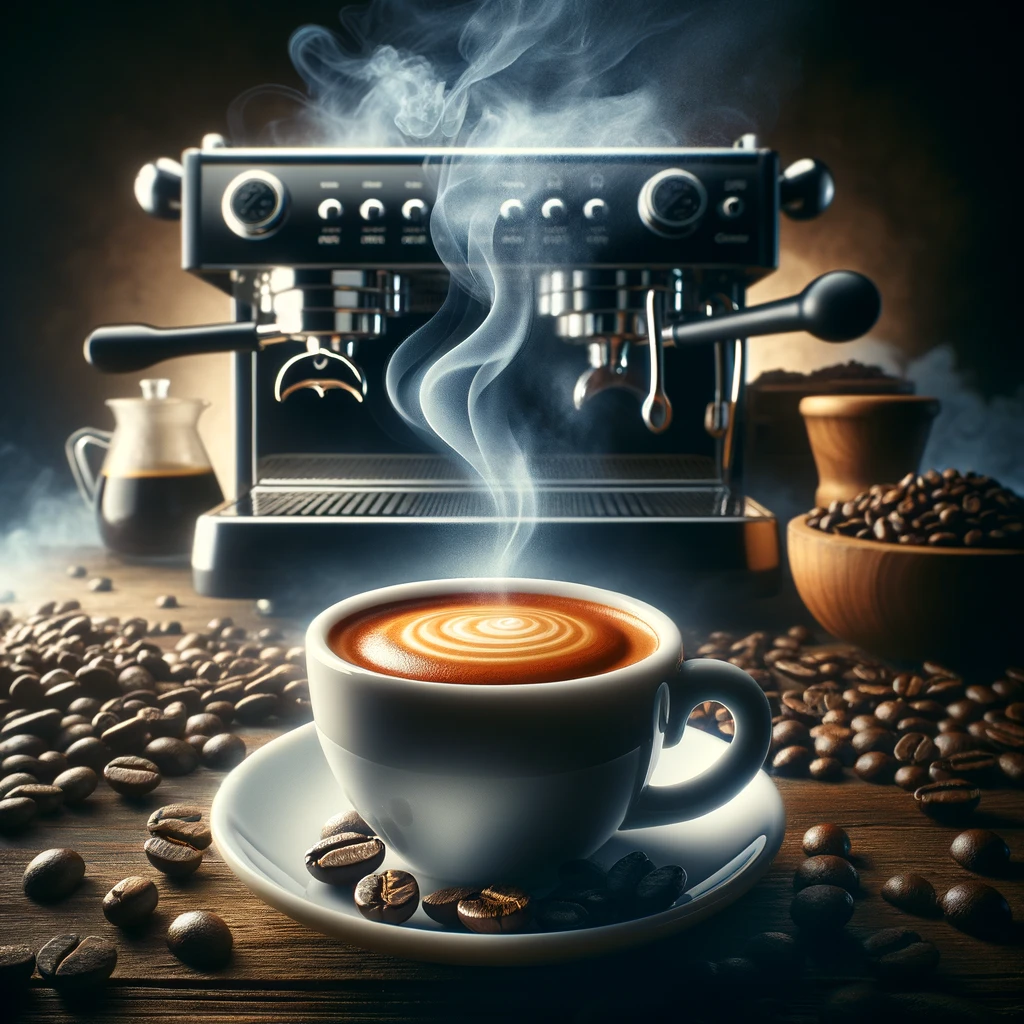This post may contains affiliate links which means I may receive a commission from purchases made through links. Learn more on my affiliate disclaimer.
Understanding the Basics: The Different Types of Coffee Gear
- The world of coffee gear is vast and varied, with different types of equipment designed to suit various brewing methods and preferences. From manual pour-over setups to high-tech automatic machines, there’s something for everyone. Understanding the basics of the different types of coffee gear can help you make informed choices about what tools are right for your brewing needs.
- One essential tool for any coffee enthusiast is a good quality coffee grinder. The grind size plays a crucial role in determining the flavor and strength of your brew, so investing in a grinder that allows you to adjust the grind settings is important. Whether you prefer a burr grinder or a blade grinder, finding one that suits your budget and brewing method will greatly enhance your coffee experience.
- When it comes to brewing methods, there are countless options to explore. From classic drip brewers and French presses to trendy Aeropresses and siphon brewers, each method offers its own unique characteristics and flavors. It’s worth experimenting with different techniques and equipment to find what works best for you.
- By understanding the basics of different types of coffee gear, you can embark on an exciting journey into the world of specialty coffee. Whether you’re just starting out or have been enjoying caffeine-fueled adventures for years, having the right tools at hand will undoubtedly elevate your brews to new heights. So grab yourself some fresh beans, get familiar with your equipment options, and start brewing up delicious cups of joe!
- A good quality coffee grinder is an essential tool for any coffee enthusiast
- Investing in a grinder that allows you to adjust the grind settings is important for determining flavor and strength of your brew
- Options include burr grinders and blade grinders, each with its own benefits and price ranges
- Experimenting with different brewing methods can help you discover unique flavors and characteristics in your coffee
- Classic drip brewers, French presses, Aeropresses, and siphon brewers are just a few examples of the many options available
- Understanding the basics of different types of coffee gear will enhance your overall coffee experience
- Having the right tools at hand will elevate your brews to new heights
- Embrace the world of specialty coffee by exploring different equipment options
Essential Coffee Brewing Tools for Beginners
When it comes to brewing coffee at home, having the right tools can make all the difference. For beginners, there are a few essential brewing tools that you should have on hand. First and foremost is a good quality coffee grinder. Grinding your beans fresh before each brew allows for maximum flavor extraction and ensures a delicious cup of coffee every time.
Another important tool is a scale. Measuring your coffee and water ratios accurately is key to achieving consistent results. A digital scale will help you achieve precision in your measurements, allowing you to experiment with different ratios until you find the perfect balance for your taste preferences.
Lastly, don’t forget about a reliable kettle with temperature control capabilities. Brewing coffee at the right temperature is crucial for optimal flavor extraction. Look for a kettle that allows you to set and maintain specific temperatures to ensure consistency in your brewing process.
Having these essential tools in your arsenal will set you up for success as you begin your journey into the world of home brewing. Experimenting with different techniques and flavors becomes much easier when you have the right equipment at hand. So invest in quality tools that suit your needs and start enjoying the art of making great coffee from the comfort of your own kitchen!
Choosing the Right Coffee Grinder for Your Brewing Needs
When it comes to brewing coffee, one of the most important factors that can affect the taste and quality of your cup is the grind size. And to achieve the perfect grind size, you need a reliable coffee grinder. There are two main types of grinders: blade grinders and burr grinders.
Blade grinders are more affordable and commonly found in many households. They work by using spinning blades to chop up the coffee beans. However, they tend to produce uneven grounds, which can result in inconsistent extraction and ultimately affect the flavor of your brew.
On the other hand, burr grinders offer a more precise and consistent grind size. They use two revolving abrasive surfaces (burrs) to crush the beans into uniform particles. This allows for better control over extraction and ensures a more balanced flavor profile in your cup.
When choosing a coffee grinder, consider factors such as budget, desired grind consistency, ease of use, and durability. Blade grinders may be suitable for beginners or those on a tight budget who don’t mind sacrificing some consistency in their brews. However, if you’re serious about achieving excellent results with every cup you make, investing in a burr grinder is highly recommended.
In summary (without using “In conclusion” or similar phrases), selecting an appropriate coffee grinder plays a crucial role in determining the overall quality of your brewed coffee. Whether you opt for a blade grinder or invest in a burr grinder depends on your preferences and priorities as well as how much control you want over your brewing process. Ultimately, finding the right grinder will help unlock all those delightful flavors hidden within each bean – ensuring that every sip brings pure satisfaction to your taste buds.
Exploring Different Coffee Brewing Methods and Equipment
When it comes to brewing coffee, there are numerous methods available that cater to different preferences and tastes. One popular method is the pour-over technique, which involves pouring hot water over coffee grounds in a filter cone. This method allows for greater control over the extraction process and produces a clean, flavorful cup of coffee.
Another popular brewing method is the French press. This simple yet effective device uses a plunger to separate the brewed coffee from the grounds. The result is a full-bodied cup with rich flavors and oils that may not be present in other brewing methods.
For those who prefer convenience without compromising on taste, automatic drip machines are an excellent choice. These machines automate the entire brewing process, allowing you to simply add water and coffee grounds before pressing start. While they may lack some of the precision offered by manual methods, automatic drip machines provide consistent results and are perfect for busy mornings or large gatherings.
In summary, exploring different coffee brewing methods and equipment opens up a world of possibilities for enjoying your favorite beverage. Whether you prefer pour-over techniques for precise control or opt for convenience with automatic drip machines, each method has its own unique advantages. Ultimately, finding your preferred brewing method will depend on personal preference and experimentation with various techniques until you find what suits your taste buds best.
The Importance of Water Quality in Brewing the Perfect Cup
The quality of water used in brewing coffee plays a crucial role in determining the taste and flavor of the final cup. Tap water, for example, often contains impurities such as chlorine or minerals that can negatively impact the taste of your brew. Therefore, it is recommended to use filtered or bottled water to ensure a clean and pure base for your coffee.
In addition to removing impurities, the temperature of the water also affects the extraction process. Ideally, water should be heated between 195°F and 205°F (90°C – 96°C) for optimal extraction. Water that is too hot can lead to over-extraction and bitterness, while water that is too cold may result in under-extraction and weak flavors. Investing in a kettle with temperature control capabilities can help you achieve consistent results.
Furthermore, understanding the mineral content of your water is essential for achieving balance in flavor. Some minerals present naturally in water contribute positively to coffee’s taste profile by enhancing acidity or sweetness. However, excessive levels of certain minerals like magnesium or calcium can lead to unpleasant flavors or scale buildup on your equipment over time. Testing your tap or filtered water using a TDS meter will provide insights into its mineral composition.
By paying attention to these aspects of water quality – purity, temperature control, and mineral content – you can greatly improve your brewing experience and enjoy a consistently delicious cup of coffee every time without any unwanted tastes or aromas interfering with the natural flavors of your beans.
Understanding Different Coffee Beans and Their Impact on Flavor
When it comes to coffee, the type of beans used plays a crucial role in determining the flavor profile of your brew. There are two main types of coffee beans: Arabica and Robusta. Arabica beans are known for their delicate flavors and acidity, while Robusta beans have a stronger, more bitter taste.
Arabica beans are considered to be of higher quality and are often preferred by coffee enthusiasts. They have a wide range of flavors, from fruity and floral notes to chocolatey undertones. On the other hand, Robusta beans tend to have a more earthy and nutty taste with hints of bitterness.
In addition to the type of bean, where they are grown also impacts the flavor. Factors such as altitude, climate, soil conditions, and processing methods all contribute to the unique characteristics found in different coffee origins. For example, coffees from Ethiopia are known for their bright acidity and fruity flavors, while those from Brazil often exhibit nutty or caramel-like notes.
The next time you enjoy a cup of coffee, take note of its flavor profile and try to identify any distinct tastes that stand out. Understanding how different coffee beans impact flavor can help you appreciate the nuances in each cup you brew or order at your favorite café.
Essential Coffee Accessories Every Newbie Should Have
1. Coffee Grinder: One essential accessory that every coffee newbie should have is a coffee grinder. Grinding your own beans just before brewing ensures the freshest and most flavorful cup of coffee possible. Look for a burr grinder, which provides a consistent grind size and allows you to adjust the coarseness to suit your preferred brewing method.
2. Digital Scale: Another must-have accessory for beginners is a digital scale. Measuring your coffee and water ratios accurately is crucial for achieving consistently delicious results. A scale allows you to precisely measure the amount of coffee grounds and water, ensuring that you maintain the correct ratio each time you brew.
3. Pour-Over Set: If you’re interested in exploring manual brewing methods like pour-over, investing in a pour-over set is highly recommended. This includes items such as a dripper or Chemex, filters, and a gooseneck kettle with precise temperature control. The pour-over method offers excellent control over extraction and produces clean, nuanced flavors in your cup of joe.
Mastering the Art of Measuring Coffee Proportions
Measuring coffee proportions is a crucial step in brewing the perfect cup of coffee. It ensures that you achieve the right balance of flavors and strength in your brew. Here are some tips to help you master this art:
1. Invest in a good quality scale: Using a scale to measure your coffee grounds and water will give you precise measurements, which is essential for consistency in your brewing process. A digital scale with accuracy up to 0.1 grams is recommended for more accurate results.
2. Follow the golden ratio: The general rule of thumb for coffee brewing is using a ratio of 1:16, meaning one part coffee to sixteen parts water by weight. This ratio can be adjusted according to personal preference, but it’s a good starting point for beginners.
3. Use freshly ground beans: Grinding your own beans just before brewing ensures maximum freshness and flavor extraction. Different grind sizes also require different ratios, so make sure to adjust accordingly based on whether you’re using coarse or fine grounds.
By mastering the art of measuring coffee proportions, you’ll have better control over the taste and strength of your brews, allowing you to tailor them according to your preferences consistently.
The Science Behind Coffee Extraction: Temperature and Time
The extraction of coffee involves the process of extracting flavors and aromas from the coffee grounds using water. Two key factors that greatly influence this extraction are temperature and time. Temperature plays a crucial role as it affects the rate at which compounds dissolve in water. Generally, higher temperatures lead to faster extraction, but there is an optimal range for achieving balanced flavors. Too high of a temperature can result in over-extraction, leading to bitter and unpleasant flavors, while too low of a temperature may result in under-extraction with weak and sour flavors.
Time is another important factor in coffee extraction. The amount of time that water is in contact with the coffee grounds determines how much flavor compounds are extracted. A longer brewing time generally leads to more extraction, but there is also an ideal range for achieving desirable flavors. If the brewing time is too short, not enough flavor compounds will be extracted, resulting in a weak cup of coffee. On the other hand, if the brewing time is too long, over-extraction can occur and lead to bitterness.
Achieving the perfect balance between temperature and time requires experimentation and understanding your preferred taste profile. It’s important to note that different brewing methods may require different temperature ranges and brew times for optimal results. By adjusting these variables accordingly, you can unlock a world of diverse flavors and create your perfect cup of coffee every time without relying on pre-packaged options from cafes or stores.
Exploring Manual Coffee Brewing Techniques
Manual coffee brewing techniques offer a hands-on approach to creating your perfect cup of coffee. These methods allow you to have full control over the brewing process, from selecting the grind size to adjusting water temperature and extraction time. One popular manual brewing technique is the pour-over method, which involves slowly pouring hot water over ground coffee in a filter cone. This method allows for precise control over water flow and extraction, resulting in a clean and flavorful cup of coffee.
Another manual brewing technique is the French press, which uses immersion brewing to extract flavors from the coffee grounds. To brew with a French press, you simply add coarsely ground coffee to the carafe, pour hot water over it, let it steep for a few minutes, and then plunge down on the mesh filter to separate the grounds from the brewed coffee. This method produces a rich and full-bodied cup of coffee with minimal sediment.
A third manual brewing technique worth exploring is cold brew or iced coffee. Cold brew involves steeping coarse-ground coffee in cold or room temperature water for an extended period (usually overnight) before straining out the grounds. The result is a smooth and less acidic beverage that can be enjoyed as-is or poured over ice for an refreshing iced version.
By experimenting with different manual brewing techniques like pour-over, French press, and cold brew methods, you can discover new flavors and tailor your cup of joe exactly to your liking. Whether you prefer bright acidity or bold richness in your morning brew, these techniques provide endless possibilities for crafting your perfect cup of manually brewed java without relying on automatic machines or complicated equipment
Diving into the World of Automatic Coffee Machines
Automatic coffee machines have revolutionized the way we brew our morning cup of joe. These machines offer convenience and consistency, making them a popular choice for coffee lovers everywhere. With just the push of a button, you can have a perfectly brewed cup of coffee in minutes.
One of the key advantages of automatic coffee machines is their ability to control various brewing parameters such as water temperature, pressure, and extraction time. This ensures that each cup is brewed to perfection, with optimal flavor and aroma. Whether you prefer a strong espresso or a smooth latte, these machines can cater to your specific taste preferences.
Another benefit of automatic coffee machines is their versatility. Many models come with multiple brewing options, allowing you to make not only espresso-based drinks but also drip coffee and even hot chocolate. Some advanced models even offer customizable settings so that you can adjust the strength and size of your beverage according to your liking.
In addition to convenience and versatility, automatic coffee machines also save you time in the mornings. Instead of grinding beans and manually preparing your drink, all you need to do is load up the machine with water and pre-ground coffee or capsules. The machine will take care of the rest while you attend to other tasks or simply relax.
As technology continues to advance, automatic coffee machines are becoming more sophisticated than ever before. From built-in grinders and milk frothers to touch screen interfaces and smartphone connectivity features, there are endless possibilities when it comes to choosing an automatic coffee machine that suits your needs.
So if you’re looking for a hassle-free way to enjoy deliciously brewed coffees at home or in the office every day without compromising on quality or taste – consider diving into the world of automatic coffee machines!
Decoding the Jargon: Coffee Gear Terminology Made Simple
Coffee gear terminology can often be confusing for beginners, but understanding these terms is essential for navigating the world of coffee brewing. Here are a few key terms to help decode the jargon:
1. Burr Grinder: A burr grinder is a type of coffee grinder that uses two revolving abrasive surfaces (burrs) to grind coffee beans into consistent particle sizes. This method ensures a more uniform grind compared to blade grinders, resulting in better extraction and flavor.
2. Pour Over: Pour over is a manual brewing method where hot water is poured over coffee grounds placed in a filter cone or dripper. The water slowly passes through the grounds, extracting flavors as it drips into a cup below. This method allows for precise control over variables such as water temperature and pour rate.
3. Espresso Machine: An espresso machine is specifically designed to brew espresso, which is a concentrated form of coffee made by forcing pressurized hot water through finely ground coffee beans. These machines typically have built-in pumps and boilers to achieve the necessary pressure and temperature for brewing espresso.
Understanding these basic terms will give you a solid foundation for exploring different aspects of coffee gear and brewing methods without feeling overwhelmed by unfamiliar jargon.
Now that you’re familiar with some common terminology related to coffee gear, let’s dive deeper into specific tools and equipment used in the world of specialty coffee brewing
Troubleshooting Common Coffee Brewing Issues for Newbies
1. Uneven Extraction: One common issue that beginners often face is uneven extraction, which can result in a cup of coffee with varying flavors and strengths. This problem is usually caused by an inconsistent grind size or improper brewing technique. To troubleshoot this issue, start by ensuring that your coffee beans are ground evenly. Invest in a good quality burr grinder to achieve consistent particle size. Additionally, pay attention to the brewing method you are using and make sure you follow the recommended techniques and ratios for optimal extraction.
2. Weak or Bitter Taste: If your brewed coffee tastes weak or bitter, it could be due to incorrect water-to-coffee ratio or inadequate brew time. Adjusting these variables can help improve the taste of your cuppa. Firstly, ensure that you are using the right amount of coffee grounds for the amount of water you are using. A general guideline is to use 1-2 tablespoons of coffee per 6 ounces of water, but feel free to adjust according to your preference. Secondly, if your coffee tastes bitter, try reducing the brew time slightly as over-extraction can lead to bitterness.
3.Coffee Grounds in Your Cup: Finding stray coffee grounds floating in your cup after brewing can be quite frustrating. This issue commonly occurs when using certain types of manual brewing methods such as French press or pour-over drippers with large holes in their filters.To minimize this problem , consider investing in higher-quality filters with smaller pores that will effectively trap any loose particles.Additionally,you may also try adjusting your grinding settings;finer grinds tendto produce less sediment while coarser grinds might let more through.Finally,pouring slowly and carefully duringthebrewing process helps prevent agitationthatcan causegrounds escape intoyourcup
Understanding the Role of Grind Size in Coffee Extraction
Grind size plays a crucial role in coffee extraction, as it directly affects the flavor and strength of your brew. The size of coffee grounds determines how quickly water can extract the desirable compounds from the beans. Generally, finer grinds result in a stronger and more intense cup, while coarser grinds produce a milder and less concentrated flavor.
When brewing with a French press or other immersion methods, using coarse grounds is recommended to prevent over-extraction. This allows for a longer steeping time without extracting too much bitterness from the beans. On the other hand, espresso machines require very fine grounds to ensure proper extraction within a short amount of time.
The grind size also affects brewing time. Finer grinds have larger surface areas compared to coarser ones, which means that water can pass through them more quickly. As a result, if you use too fine of a grind for your chosen brewing method, your coffee may be over-extracted and taste bitter. Conversely, using too coarse of a grind may lead to under-extraction and weak flavors.
In summary (without using any summary phrases), understanding how different grind sizes impact coffee extraction is essential for achieving your desired flavor profile. Experimentation with various grind settings can help you find the perfect balance between strength and taste for each specific brewing method you choose to explore. Remember that adjusting your grind size is one way to control variables during the brewing process and ultimately enhance your overall coffee experience.
Coffee Gear Maintenance: Tips for Keeping Your Equipment in Top Shape
Regular maintenance is key to ensuring that your coffee gear continues to perform at its best. Here are some tips to keep your equipment in top shape:
1. Clean your equipment after each use: Coffee residue can build up over time and affect the taste of your brew. After every use, make sure to clean all parts of your coffee gear thoroughly. Use warm soapy water and a soft brush or cloth to remove any oils or grinds that may have accumulated.
2. Descale regularly: Over time, mineral deposits from water can accumulate inside your coffee maker or espresso machine, affecting its performance and lifespan. To prevent this, descaling is essential. Follow the manufacturer’s instructions on how often you should descale and what products to use.
3. Check for wear and tear: Inspect your coffee gear regularly for any signs of wear and tear, such as cracks or leaks. Replace any damaged parts immediately to avoid further damage or accidents during brewing.
By following these simple maintenance tips, you can ensure that your coffee gear stays in optimal condition for a long time, allowing you to enjoy delicious cups of coffee every day without any issues.
Remember that proper maintenance not only extends the life of your equipment but also contributes to consistently great-tasting coffee. So take care of your gear, and it will reward you with excellent brews every time!
FAQs (Frequently Asked Questions)
Why is it important to maintain coffee gear?
It is important to maintain coffee gear to ensure optimal performance and longevity of the equipment. Proper maintenance can also prevent flavor contamination and ensure that you consistently brew the best-tasting coffee.
What are some basic maintenance tips for coffee gear?
Some basic maintenance tips for coffee gear include regularly cleaning and descaling the equipment, properly storing it when not in use, and regularly replacing worn-out parts like filters or gaskets.
How often should I clean my coffee gear?
It is recommended to clean your coffee gear after each use. This includes cleaning the brewer, grinder, filters, and any other parts that come in contact with coffee grounds or water.
How do I clean my coffee gear?
To clean coffee gear, you can use a mild dish soap and warm water. Follow the manufacturer’s instructions for cleaning specific equipment. It is important to rinse thoroughly to remove any soapy residue.
How often should I descale my coffee equipment?
The frequency of descaling depends on the hardness of your water and the usage of your equipment. As a general guideline, it is recommended to descale coffee equipment every 1-3 months.
What is the best way to descale coffee gear?
There are various descaling products available in the market specifically designed for coffee equipment. Follow the instructions provided with the descaling product or refer to the manufacturer’s guidelines for your specific equipment.
Should I use filtered water for brewing coffee?
Using filtered water is highly recommended for brewing coffee. It helps remove impurities and minerals that can affect the flavor and performance of your coffee gear.
How often should I replace the coffee filters?
The frequency of replacing coffee filters depends on the type of filter you are using and the manufacturer’s recommendations. Disposable paper filters should be replaced with each use, while other types of reusable filters may have a longer lifespan.
How can I prevent clogs in my coffee grinder?
To prevent clogs in your coffee grinder, make sure to clean it regularly and remove any coffee residue or oils that can build up. Avoid grinding oily or flavored beans, as they can contribute to clogging.
Are there any specific tips for maintaining manual coffee brewing equipment?
Yes, for maintaining manual coffee brewing equipment, make sure to clean all parts thoroughly after each use. Pay attention to cleaning the filters, plungers, and any other components that come in contact with coffee grounds.
How can I troubleshoot common coffee brewing issues with my gear?
One common issue to troubleshoot is weak coffee, which can be due to using too coarse of a grind. Another issue is over-extraction, which can happen if the water temperature is too high or the brew time is too long. Experimenting with different variables can help identify and resolve brewing issues.
Why is grind size important in coffee extraction?
Grind size plays a crucial role in coffee extraction because it determines the surface area of the coffee particles exposed to water. Different brewing methods require different grind sizes to optimize extraction and achieve a balanced flavor profile.
Conclusion
In the world of coffee gear, where a vast array of equipment caters to various preferences and brewing methods, understanding the basics is the key to unlocking a truly exceptional coffee experience. From the essential tool of a quality coffee grinder to the exploration of diverse brewing methods, we’ve delved into the fundamentals of coffee gear.
We’ve learned that the grind size, whether fine or coarse, is a pivotal factor influencing the flavor and strength of your brew, and choosing the right coffee grinder is paramount in this pursuit. We’ve also discovered the richness of possibilities when it comes to brewing methods, from the precision of pour-overs to the simplicity of automatic machines.
Throughout our journey, we’ve emphasized the importance of water quality, bean selection, and meticulous proportioning in creating your perfect cup of coffee. And we’ve touched upon the significance of proper equipment maintenance to ensure that your coffee gear continues to deliver exceptional brews.
In embracing the world of specialty coffee, you’ve gained the knowledge to elevate your coffee brewing to new heights. Armed with the right tools and a passion for the perfect cup, you’re now ready to embark on your own caffeine-fueled adventures, savoring each sip of freshly brewed delight. So go ahead, seize the day, and brew your way to coffee perfection!





